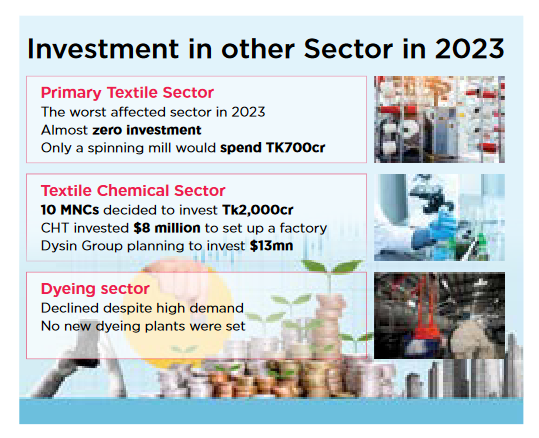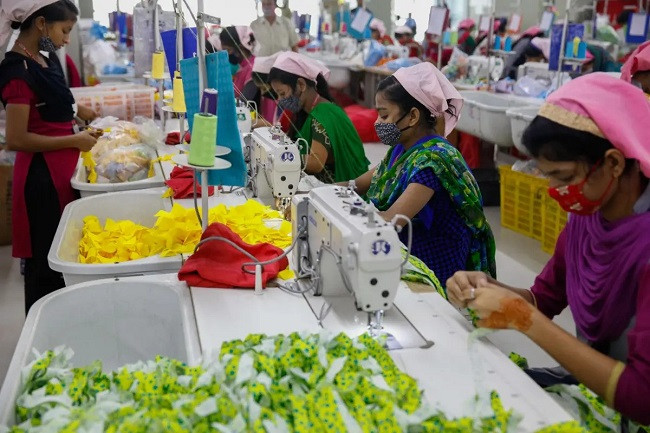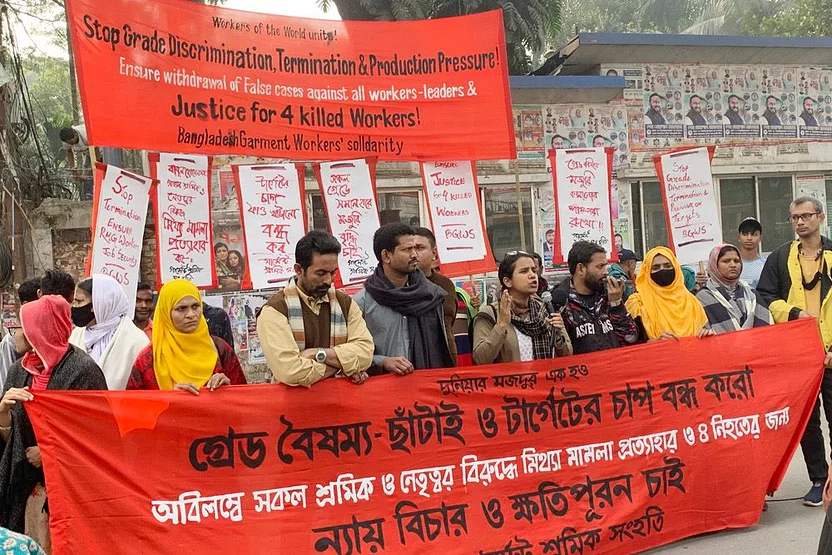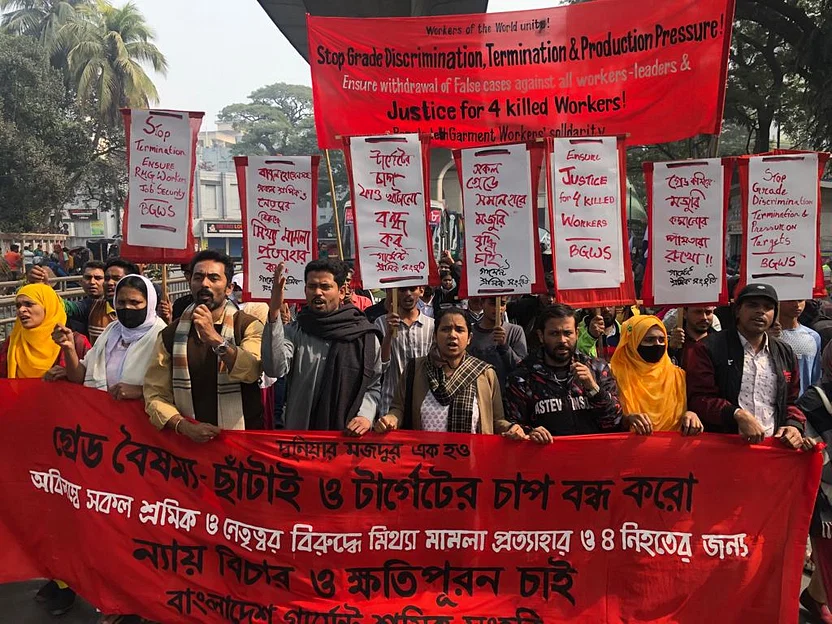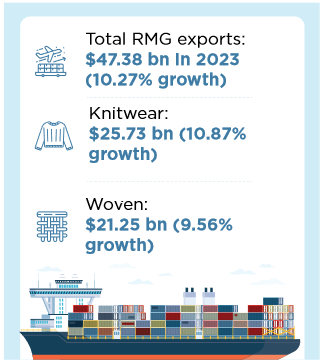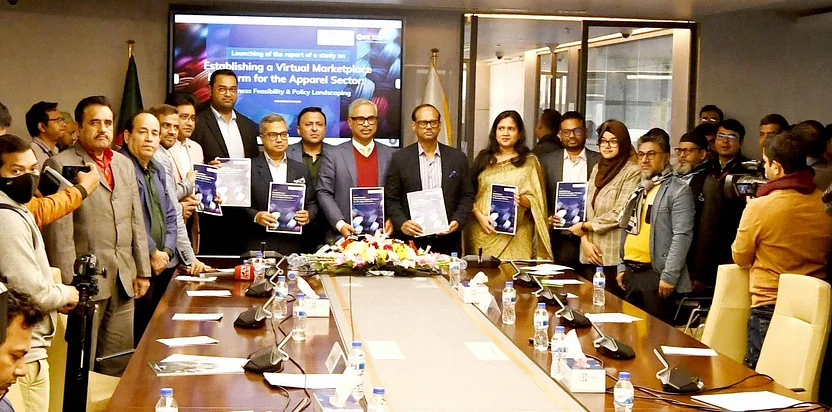30+ fashion backs safety net for Bangladeshi garment workers
Over 30 fashion brands and retailers have stepped up to safeguard workers of Bangladeshi readymade garments (RMG). They have promised a yearly 0.019% contribution based on their Bangladesh RMG exports to bolster the Employment Injury Scheme (EIS Pilot). This innovative program offers financial protection against workplace injuries and fatalities, bringing much-needed security to thousands of lives.
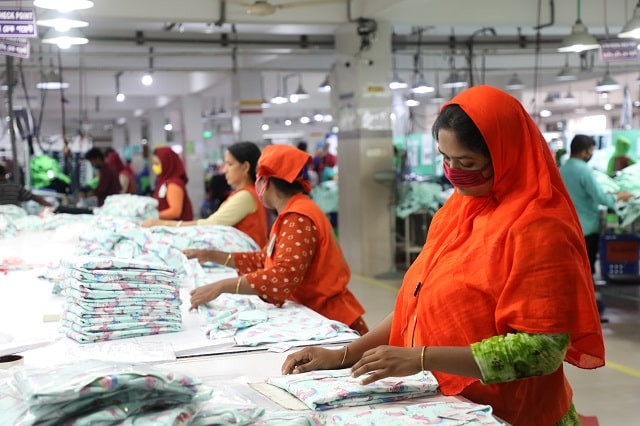
The monetary commitment of fashion brands and retailers that have signed up to the scheme such as H&M, Primark, Amazon, C&A, Puma, Decathlon, Giorgio Armani and VF Corp translates to $19,000 annually from a brand with an apparel export volume of $100m.
By concentrating on reimbursing for work-related injuries, the initiative aims to help those facing hardship, covering support to the enduringly disabled and the families of dead workers.
Monthly payments and pensions provided, adhere to international labor standards (ILO Convention No. 121).
This collective move marks a major milestone in promoting worker well-being within the industry. It’s a testament to the growing commitment to ethical practices and social responsibility in the global fashion landscape.
The Ethical Trading Initiative hails the Employment Injury Scheme Pilot (EIS) as a game-changer for Bangladesh’s RMG industry. This innovative program goes beyond mere compensation. Its powerful data gathering and learning systems tackle occupational accidents, diseases, and rehabilitation head-on, ensuring comprehensive protection for thousands of workers. This vital lifeline fuels a safer, healthier future for the industry!
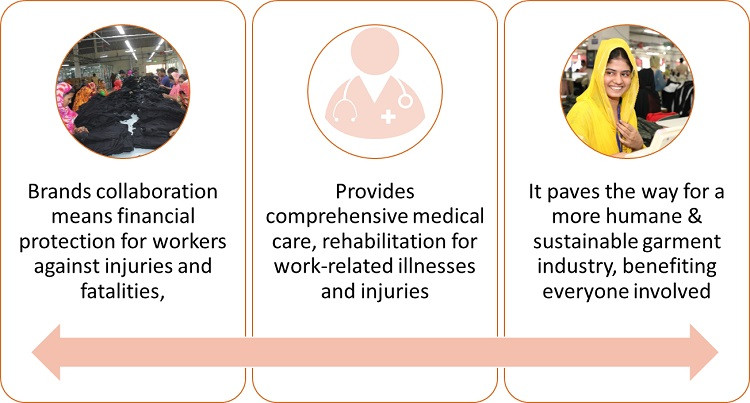
Faisal RabbiFaisal Rabbi, Stakeholder Engagement & Public Affairs Manager – H&M said in a social media post, “The EIS Pilot initiative is the first social insurance scheme initiative providing a financial benefit to garment workers and their families in case of work-related death and permanent disability. While it is a time bound approach to be transformed into a national system based on employers’ contribution, it is already a testament to the commitment of the Bangladeshi Government, the industry and its workers’ unions, to the well-being of their workers.”
Partnership with the Deutsche Gesellschaft für Internationale Zusammenarbeit (GIZ), the German Technical Cooperation Agency, and the International Labour Organization (ILO) underlines the cooperative effort to care the EIS Pilot initiative.
In addition, GIZ and the ILO bid technical assistance to the Ministry of Labor and Employment (MoLE), social partners, and other shareholders to safeguard active implementation. ETI, in combination with businesses, NGOs, and trade unions, plays a key role in generating workplaces where human rights are appreciated and RMG workers are treated with self-respect.
Associated with the vision of the Ethical Trading Initiative (ETI), the EIS Pilot goals to indorse workers’ rights, safeguard decent working conditions in Bangladesh’s multifaceted RMG sector, deliver financial security, safeguard basic needs can still be met amid sorrow and offer peace of mind to sustain of unexpected calamities.
Among the early participants in the EIS scheme – One+All, an ETI company member’s Overseas Director Ken Edgar, said to media, “Taking part is the right thing for us, giving greater reassurance to our workers, should they suffer an accident or worse. And our relationship with ETI is critical in steering us to make ongoing improvements for our workers, and we want to encourage more RMG sector brands to step forward and commit to the EIS scheme.”
The EIS goes beyond basic support for injured workers in Bangladesh. This safety net offers comprehensive coverage, including medical care, rehabilitation, and income replacement during injury or illness. It builds on existing lump sums for death and disability, aiming to match international standards and provide true financial security for workers and their families.
The project, which the governments of the Netherlands and Germany fund, will also gather data on average medical costs for a worker in case of injury, benefits provided in case of temporary incapacity, along capacity-building on occupational accidents, diseases and rehabilitation, to fine-tune what the cost of a fully functioning EIS could be in Bangladesh.
Also, around 150 RMG factories will partake in the first part of the trial, which will primarily run for three years, with the choice of being extended for another two. If the pilot proves successful, it could be extended to other sectors of the economy.






